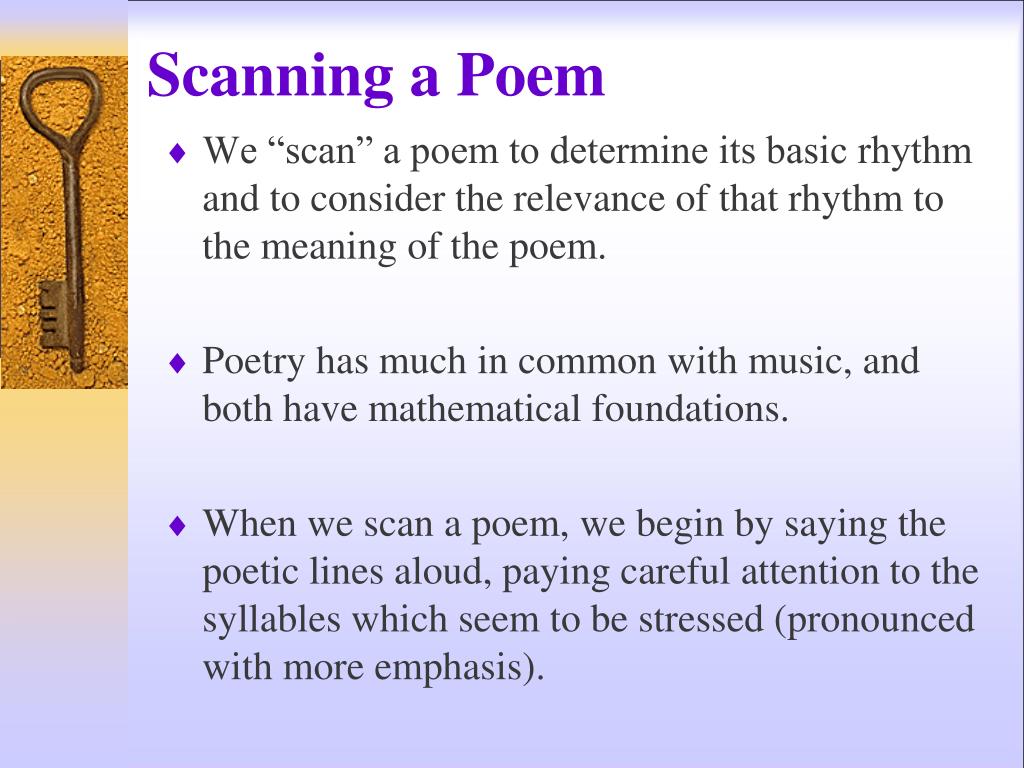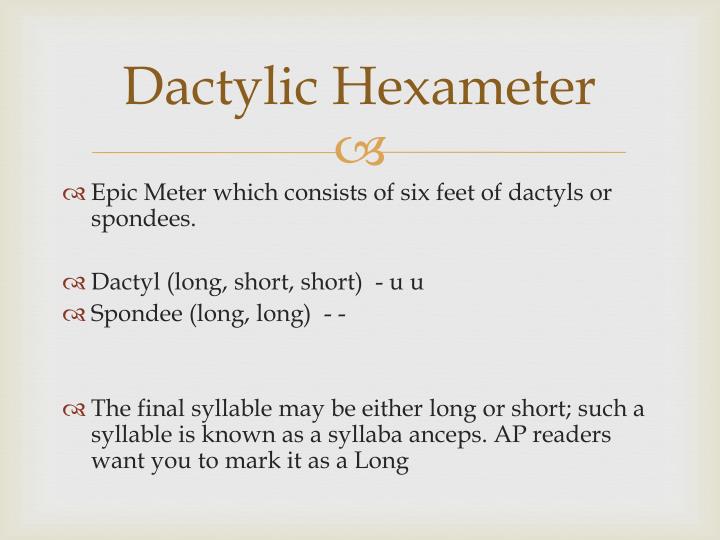
- #DEFINE SCANSION IN POETRY HOW TO#
- #DEFINE SCANSION IN POETRY SERIES#
- #DEFINE SCANSION IN POETRY FREE#
Take, for instance, the opening lines of e.
#DEFINE SCANSION IN POETRY FREE#
By breaking down free verse into metrical feet, we get a better sense of the ‘notes’ and rhythms a poem uses, even if the poem seems improvised.

So, in a sense, using scansion on free verse is like transcribing a jazz solo. Listening to a solo (or any piece of music) and then writing it down is called transcription. However, these solos are still made of notes and rhythms, which can be written down on sheet music. These solos are improvised, which means that the person playing the solo is making it up as he or she goes along.
#DEFINE SCANSION IN POETRY SERIES#
Most jazz songs start with a noticeable melody, which is then followed by a series of solos. To answer this question, I’ll borrow some terminology from music.Imagine you’re listening to an old jazz record (for example, ‘Kind of Blue’ by Miles Davis). At this point, you may be wondering why anyone bothers to scan free verse. Although it’s a bit more challenging, it’s possible to pick out metrical feet in free verse. Of course, scansion isn’t just used for metered poems. This extra syllable is known as a feminine ending, and it occurs often in iambic meters. There’s also an extra syllable (‘thers’) after the last iamb in the line (‘with fea’). ’The first foot (‘Hope is’) is a trochee, which is a strong syllable followed by a weak syllable (the exact opposite of an iamb). Let’s look at that line again:’Hope is the thing with feathers. This is because this line uses something called metrical substitution, which just means switching one kind of metrical foot with another. What about the first line of the example, though? It doesn’t seem to follow quite the same meter that the other lines use. Because the most common metrical foot in the example is the iamb, we would describe the meter of this poem as iambic. This kind of pair is the most widely used metrical foot in English poetry. It’s best to start small, so we usually look for pairs of syllables first.In this example, the most common pair is an iamb, a weak syllable followed by a strong syllable. First, we have to ask ourselves if any arrangement of weak and strong syllables appears more than others.
#DEFINE SCANSION IN POETRY HOW TO#
’Now that the strong syllables have been pointed out, let’s talk about how to identify metrical feet. Here we go! ‘Hope is the thing with feathersThat perches in the soul,And sings the tune with out the words, And never stops at all. For our purposes, we’ll highlight to indicate which syllables are strong. ’Hear the pattern? Now we’ll use scansion so we can see the pattern. Here is the first stanza from Emily Dickinson’s Poem 254:’Hope is the thing with feathersThat perches in the soul,And sings the tune without the words,And never stops at all. To ease into the process of scansion, let’s start with an example that uses meter. Once this is accomplished, we can use those visual cues to identify different kinds of metrical feet. Fortunately, there is a method called scansion that uses visual cues to show which syllables are weak and which syllables are strong. Not all strong syllables receive the same amount of emphasis.How do we find these metrical feet? Particularly in free verse, it can be difficult to focus on any sort of rhythm. Just to be clear, when we say a syllable is strong, we mean it receives more emphasis than the syllable or syllables next to it. These syllables can be grouped into units called metrical feet.Ī metrical foot is simply an arrangement of weak and strong syllables. Poetry that doesn’t use rhyme or meter is called free verse.Regardless of whether or not a poem uses meter, every poem contains weak and strong syllables, even if those syllables aren’t part of a larger pattern. However, not all poems follow such a pattern. Traditionally, a poem has what is called meter, a certain pattern of weak and strong syllables.


It’s fairly easy to hear this music when a poem rhymes, but the sounds of poetry don’t depend on rhyme alone. * All Partners were chosen among 50+ writing services by our Customer Satisfaction Team


 0 kommentar(er)
0 kommentar(er)
